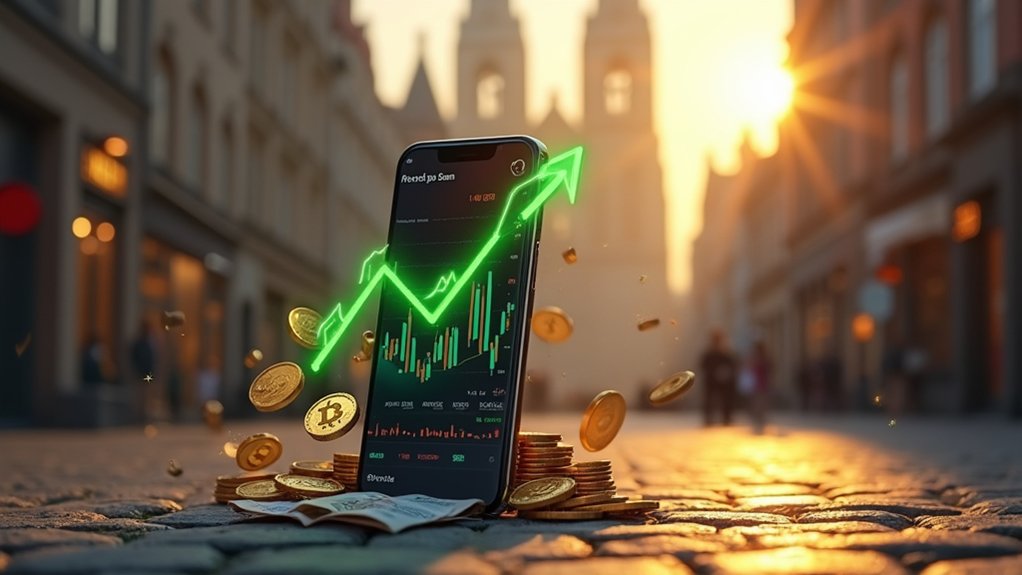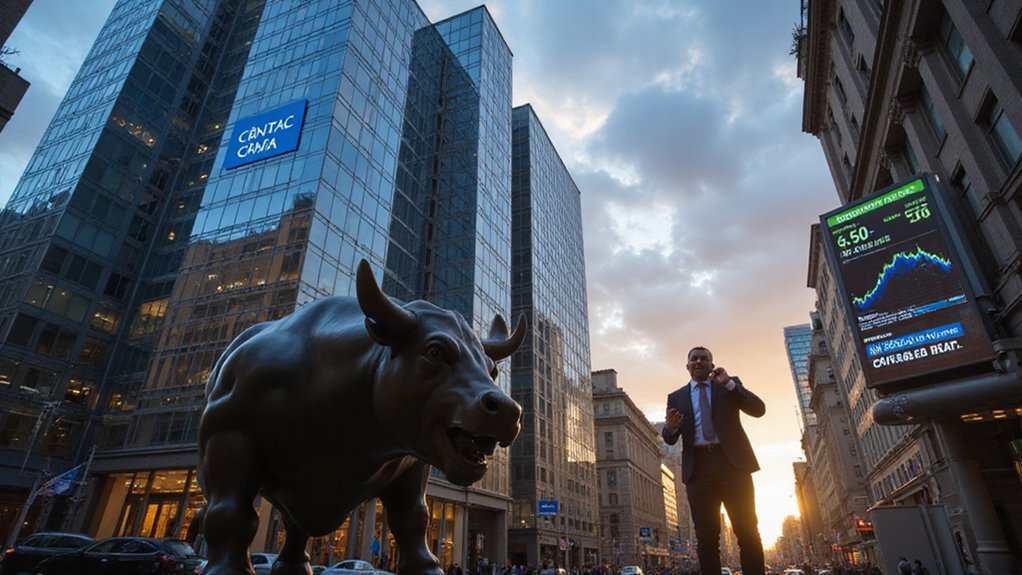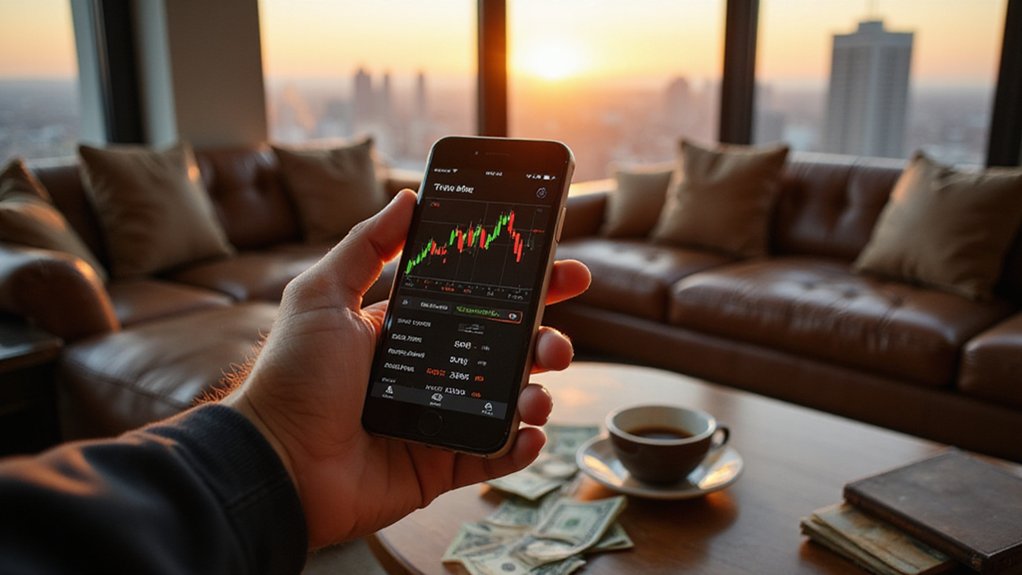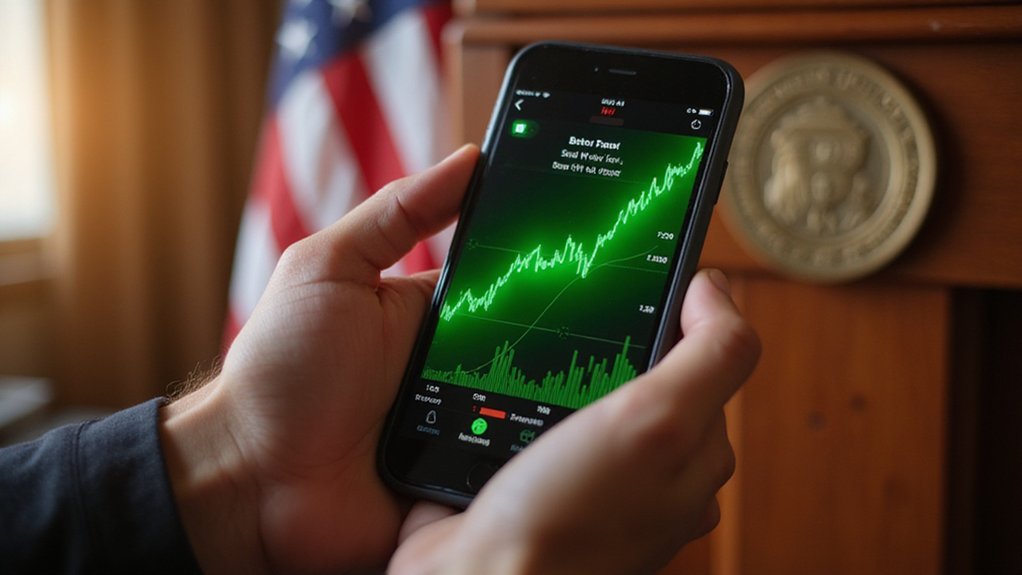Robinhood has audaciously thrust itself into the European financial arena with a blockchain-powered gambit that transforms American equities into tradeable tokens—a move that sent its stock soaring 11.25% to an all-time high of $92.37 and suggests the democratization-obsessed brokerage believes the future of finance runs on rails it intends to lay.
The architectural foundation rests on a Layer 2 blockchain built atop Arbitrum, enabling 24/5 commission-free trading of tokenized US stocks and ETFs across 30 European Union and European Economic Area countries. This isn’t merely technological showboating; armed with a MiCA regulatory license, Robinhood can legally operate in 27 European jurisdictions while offering something genuinely novel—round-the-clock access to American markets that traditionally slumber when European traders wake.
Robinhood’s blockchain infrastructure shatters temporal barriers, delivering American market access when European trading floors traditionally go dark.
The scope proves ambitious: over 400 million potential customers can now trade more than 200 tokenized stocks and ETFs, complete with dividend payments delivered directly through the app. The platform simultaneously introduced crypto staking for Ethereum and Solana, incentivizing customer retention through yield generation while expanding utility beyond simple trading mechanics. Adding further sophistication to its trading infrastructure, Robinhood has integrated Smart Exchange Routing to ensure optimal price execution across all order types.
Market reception suggests investors recognize disruptive potential—Robinhood’s stock has surged 148% since January 2025, reflecting confidence in its crypto-centric pivot. The tokenization infrastructure extends beyond equities, designed to accommodate real-world assets and potentially revolutionize asset liquidity models across European financial markets. European customers can now also access crypto perpetual futures with up to 3x leverage, expanding their derivatives trading capabilities within the comprehensive platform ecosystem.
This transformation positions Robinhood as something more consequential than a crypto-only application; it’s evolving into an all-encompassing investment platform that views blockchain technology as the global financial system’s backbone. The regulatory compliance through MiCA licensing provides legal certainty that many blockchain ventures lack, creating sustainable expansion possibilities across multiple European jurisdictions. The platform’s staking features represent a form of liquidity mining where users can earn rewards by providing their digital assets to DeFi protocols integrated within the ecosystem.
Whether this bold leap succeeds depends largely on retail investor appetite for tokenized assets and the platform’s ability to maintain regulatory favor while scaling operations. The seamless integration of Web3 technology within regulated frameworks represents either inspired innovation or elaborate overengineering—time will determine which interpretation proves accurate.
For now, Robinhood appears committed to redefining European investment infrastructure through blockchain rails, confident that traditional market barriers deserve dismantling.









